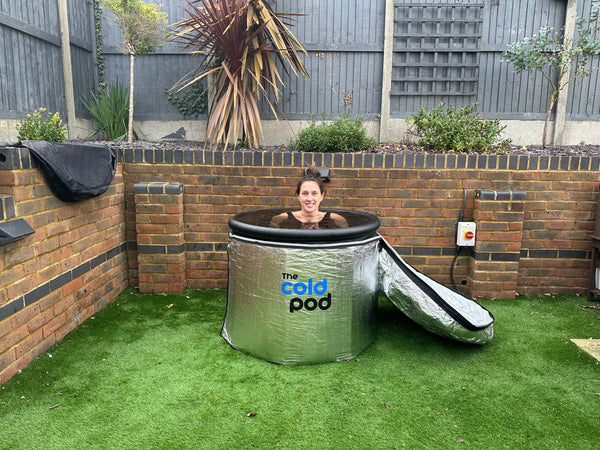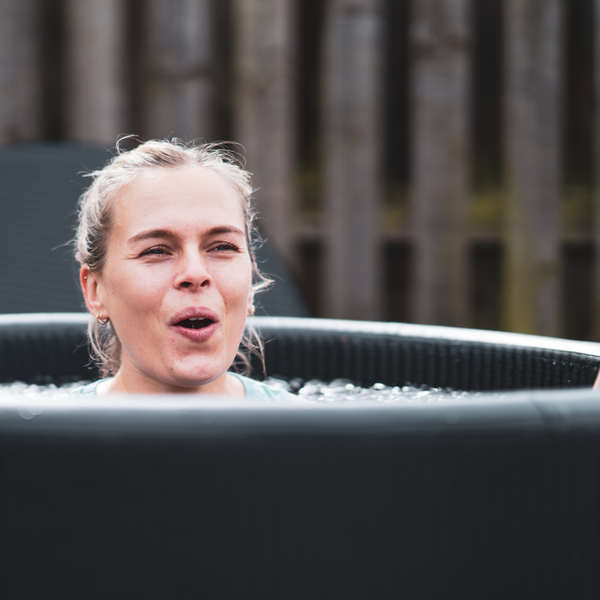Ice baths have gained popularity among athletes and fitness enthusiasts as a powerful recovery tool. From top athletes like LeBron James to renowned performers like Lady Gaga and actors like Chris Hemsworth, ice baths have become a staple in their routines. Now, before you get your hopes up, we must clarify that we can’t guarantee you’ll emerge from an icy dip looking like the ruggedly handsome Mr. Hemsworth. However, fear not, as the benefits of cold-water immersion are sure to improve your life! But what exactly are the benefits of immersing in icy water, and how can you make the most of this practice? In this blog post, we will delve into the world of cold-water bathing, highlighting the 10 significant benefits and providing tips for success in incorporating this into your routine.
What Are Ice Baths?
Ice baths, also known as cold-water immersion, involve submerging the body in icy water after intense physical activity. The water is typically maintained at temperatures between 10-15 degrees Celsius, creating a chilling effect without reaching freezing temperatures. This form of cryotherapy is believed to provide numerous benefits to the body.
1. Improved Sleep:
One of the notable benefits of ice baths is their potential to improve sleep quality. To fall asleep, the body needs to reach a lower temperature, and cold bathing can help facilitate this process. Additionally, the cold immersion positively influences the central nervous system, promoting relaxation and better sleep patterns.
2. Enhanced Muscle Recovery:
Ice baths are widely recognised for their ability to aid in muscle recovery. After intense exercise, the muscles may experience micro-tears and inflammation. Cold-water immersion constricts the blood vessels, reducing inflammation and minimising muscle damage. When you exit the ice bath, the blood vessels dilate rapidly, flooding the muscles with oxygen and essential nutrients, thereby expediting the recovery process.
3. Reduced Risk of Injury:
By promoting muscle recovery and reducing inflammation, ice baths can contribute to a lower risk of injury during subsequent workouts. When your muscles are properly rejuvenated, they are better equipped to handle physical stress and strain, decreasing the likelihood of strains, sprains, or other injuries.
4. Alleviation of Delayed Onset Muscle Soreness (DOMS):
Many endurance athletes, such as long-distance runners, rely on ice baths to alleviate the symptoms of delayed onset muscle soreness (DOMS). DOMS typically occurs 24 to 72 hours after strenuous exercise and can impede subsequent training sessions. Cold-water immersion reduces inflammation and promotes faster recovery, allowing athletes to bounce back more quickly.
5. Effective Body Cooling:
Intense physical activity raises the body’s core temperature, which can lead to hyperthermia or overheating. Ice baths provide an efficient way to cool down the body rapidly. Studies have shown that ice water immersion and cold-water immersion are effective methods for lowering the body’s core temperature, particularly for individuals engaged in long-distance running or endurance events.
6. Improved Mental Health:
While the idea of immersing oneself in icy water may not sound appealing, the mental benefits of ice baths are worth considering. Over time, as you build tolerance to the cold, you develop a sense of resilience and mental fortitude. This can positively impact your mood, increase your ability to relax, and enhance your overall mental well-being.
7. Increased Blood Circulation:
Ice baths stimulate vasoconstriction and vasodilation, which involves the constriction and dilation of blood vessels. When you enter an ice bath, the cold causes vasoconstriction, narrowing the blood vessels. When you exit, the body responds with vasodilation, widening the blood vessels. This process improves blood circulation, ensuring vital nutrients and oxygen are efficiently transported throughout the body.
8. Enhanced Immune Function:
Cold exposure has been linked to an increase in white blood cell production, which plays a vital role in immune function. By regularly subjecting yourself to the cold stimulus of ice baths, you may strengthen your immune system and potentially reduce the risk of illness and infection.
9. Stress Reduction:
Although ice baths may initially induce a stress response in the body, repeated exposure can actually help reduce overall stress levels. By challenging yourself to endure the discomfort of the cold, you train your mind and body to adapt to stressful situations, fostering resilience and improved stress management.
10. Heightened Performance:
Ice baths have been associated with enhanced athletic performance. By facilitating faster recovery, reducing inflammation, and promoting overall physical well-being, ice baths can help athletes perform at their best and achieve their goals.
Tips
Now that we’ve explored the numerous benefits of ice baths, here are some tips to enhance your experience and ensure safety:
Temperature Control:
Maintain the water temperature in your ice bath between 10-15 degrees Celsius. Use a reliable thermometer to accurately measure the temperature. Going below this range can have serious health implications, while exceeding it may lessen the desired effects.
Time Management:
Limit your ice bath duration to a maximum of 15 minutes. It’s advisable to start with shorter sessions, gradually increasing the time as you become more accustomed to the cold. This approach allows your body to adapt and reduces the risk of overexposure.
Gradual Immersion:
If you’re new to ice baths, ease into the experience by immersing one body part at a time. Begin with your legs or arms and gradually progress to include more of your body as you grow comfortable with the cold sensation. This gradual approach helps acclimate your body and prevents sudden shocks to your system.
Appropriate Attire:
Wear a hat or head covering to help retain heat during the ice bath. Since a significant amount of heat is lost through the head, keeping it warm can enhance your overall comfort and minimise discomfort.
Distraction Techniques:
To divert your attention from the cold sensation, try incorporating distractions during your ice bath. Listen to music, podcasts, or audiobooks to engage your mind. Alternatively, practice counting or meditation to focus your thoughts. These activities can help shift your attention away from the cold and make the experience more manageable.
Conclusion
Ice baths, offer a wide range of benefits for athletes and fitness enthusiasts alike. From improved sleep and enhanced muscle recovery to reduced risk of injury and alleviation of delayed onset muscle soreness (DOMS), the advantages of ice baths are endless.
To make the most of your ice bath experience, it’s important to practice temperature control, ensuring the water remains between 10-15 degrees Celsius. Time management is crucial, with recommended bath durations of a maximum of 15 minutes. Gradual immersion, starting with one body part at a time, allows for adaptation and minimises sudden shocks to the system. Wearing a hat or head covering helps retain heat, and incorporating distraction techniques such as listening to music or engaging in meditation can help shift your focus away from the cold sensation.
While ice baths may not transform you into a celebrity look-alike, the benefits they offer to your physical and mental well-being are undeniable. So, if you’re ready to take your recovery and performance to the next level, consider incorporating icy plunges into your routine and embrace the chilly challenge.







